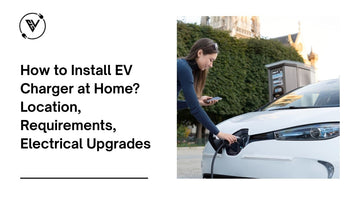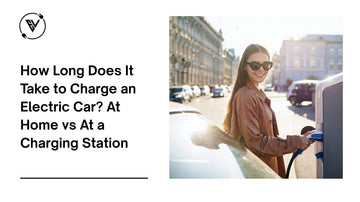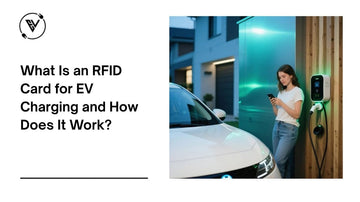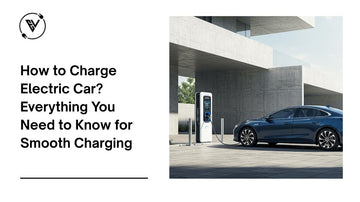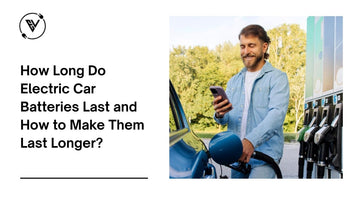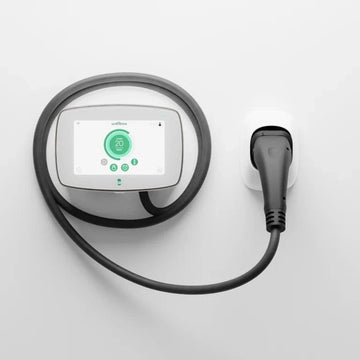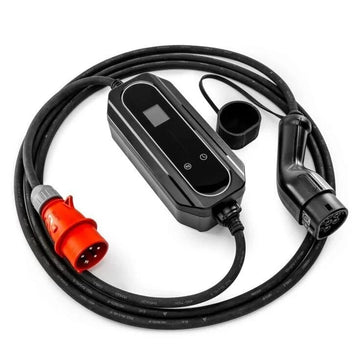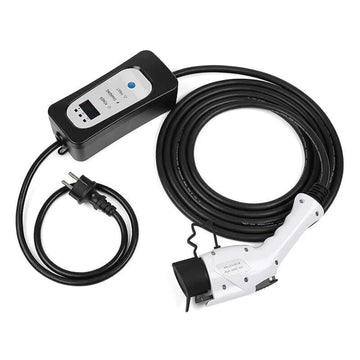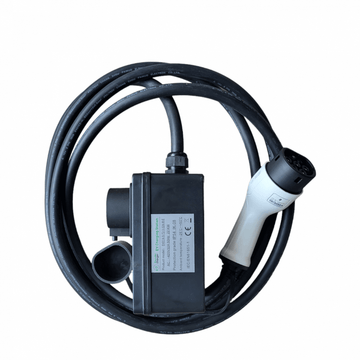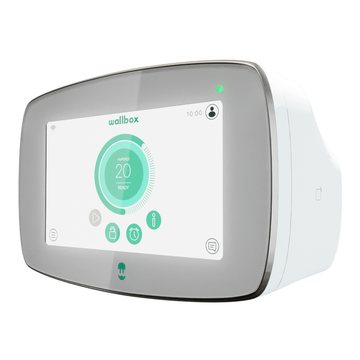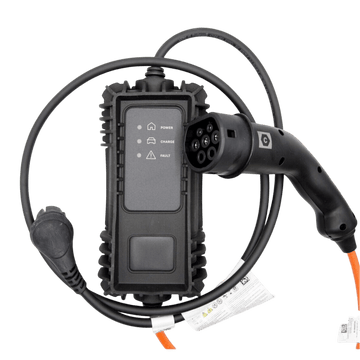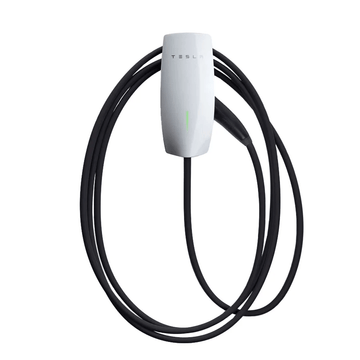Installing an EV charger at home means fitting a dedicated electric car charging point, usually on a wall, to charge your vehicle faster and more safely than a standard household plug. This setup is ideal for regular home charging and long-term use.
If you want to install an EV charger at home, here's what you need to do:
- Pick a spot close to where you park so the charging cable can reach easily.
- Make sure your home’s electrical system can handle the power—most houses use 7kW chargers, but faster ones (22kW) need a special setup.
- Hire a certified electrician to check everything and do the installation safely.
- Choose a smart charger that works with your car and has cool features like setting charging times, tracking energy use, and connecting to Wi-Fi.
With the right planning and a pro doing the work, the whole thing usually takes just a few hours and makes charging your car at home way easier and cheaper.
Why Install a Home EV Charger?
There are many pluses to installing an EV charger at home. Here's why we recommend it:
- Faster Charging: Home EV chargers can fully charge most electric cars overnight—significantly quicker than using a regular household plug.
- Smart Features: Many chargers allow scheduled charging during off-peak hours to save on energy costs.
- Enhanced Safety: Purpose-built chargers include safety features like surge protection and weatherproof casings, ensuring safe, controlled power delivery without overheating.
- Convenience: Installing an EV charger and having a home charging station is also convenient. You can plug in your EV at home as soon as you arrive and wake up to a fully charged battery—no more searching for or waiting at public chargers.
- Energy Monitoring & Remote Access: Smart chargers often come with Wi-Fi connectivity, enabling remote control, energy usage tracking, and integration with solar panels.
- Efficiency & Ease: Overall, a home EV charger greatly simplifies electric vehicle ownership, making it more efficient, cost-effective, and user-friendly.

Checklist Before Installing a Charger for Electric Vehicles
Before you begin your EV charger installation, consider a few things:
- Parking Location: Make sure your car can park close to where the charger will be installed. Most charging cables are about 5 meters long, so keep this in mind.
- Power Capacity: Your house needs to have enough electrical capacity to support a charger. Most homes can handle a 7kW home charger, but for faster charging (22kW), you need a three-phase power supply.
- Cabling Plan: Decide how and where the cables will run. Will it be above ground, underground, or through walls? Will you need armoured cables? These choices affect the installation cost.
- Installer Coordination: Make sure you use a qualified electrician with experience in car charger installation. They’ll also contact your distribution network operator (DNO) if needed.
- Future Proofing: Think ahead. Will you buy another EV soon? Consider a dual charger or one with features like load management using a CT clamp to prevent overloading your home.
Choosing the Right Location for Your EV Charger

Location matters for both safety and convenience. Your charger should be as close as possible to your parking space, whether that’s in your garage, driveway, or side of the house.
Choose a spot where the charging cable can easily reach your car without stretching across walkways or driveways. Think about where the plug is on your vehicle—front, side, or back—and place the charger accordingly.
Make sure the instalation area has good access for the electrician. The surface (like a wall) should be strong enough to hold the unit, and there should be enough space for the cables and protective elements.
Also, keep in mind your future needs. If you plan to move or add another electric car, pick a spot that allows easy upgrades without extra construction.
Home Power Supply Requirements
The most common home charger is a 7kW unit, which is perfect for most homes with single-phase electricity. It can fully charge a standard EV overnight. A 22kW home charger is faster but needs a three-phase power supply, which many homes don’t have.
Always check your power supply capacity. Overloading your system could cause voltage drop issues or even damage your home wiring. Your installer will check this during the site survey.
For smart load balancing, some systems use a CT clamp to monitor overall energy usage and reduce charging speed if your home’s total usage gets too high.
Which EV Charger Should You Install?
When choosing a home EV charger, consider the following:
- Smart Features: Look for units that support smart charging, allowing you to control schedules, monitor energy usage, and manage charging through an app.
- Compatibility: Make sure it’s compatible with your electric vehicle and charging plug type (Type 1 or Type 2 charging cables). For example, if you drive a Tesla or use different plug types, you may also need specific accessories like Tesla charging cables or a Type 1 to Type 2 adapter to ensure your setup is fully compatible.
- Warranty: Choose a charger with a solid warranty and a trusted brand.
- Ease of Use: EV wall chargers are popular and space-saving. Some chargers come with tethered cables, others are untethered, so you use your own cable.
- Future Proofing: Some models support dual charging or software updates for new features later.
Also, look for installation included in the price, because many suppliers offer standard installation included in the purchase cost.
Electrical Cable Options and Routing Considerations
EV charger installation requirements include the right cabling. The installer will choose the best cable based on the charger’s power and location. Here's what matters:
- Cable sizing: A 7kW charger typically needs a 6mm² cable. For longer runs or 22kW chargers, thicker cables are required.
- Data cables: For smart chargers with load management, CAT5E or CAT6 data cables may be needed to connect the charger to the energy meter.
- Trench depth: If cables need to go underground, they must be buried to the correct depth—usually 450mm or more with warning tape above them for safety.
- Interference prevention: To avoid signal problems, especially with smart meters or wi-fi, data cables should be routed separately from power cables.
Always let your qualified electrician plan the best cable route to avoid unnecessary extra cost later on.
What’s the difference between Type 1 and Type 2 charging cables?
- Type 1 cables have a 5-pin plug, support only single-phase charging up to 7.4 kW, and are common in older North American and Asian EVs.
- Type 2 cables have a 7-pin design, support both single and three-phase charging up to 22 kW, and are standard in Europe and the UK. They offer faster charging and better safety with locking on both ends.
Required Electrical Upgrades Before Installation
Before getting your EV charger installed, you might need to upgrade some parts of your home's electrical system to make sure everything is safe and follows the rules. These upgrades can make the installation more expensive, so it’s good to know what might be needed ahead of time.
- Cut-out fuse upgrade: This is the main fuse where power enters your house. If it’s old or rated too low, your distribution network operator may need to upgrade it to handle the charger's demand. This is sometimes done for free, but it can also come with an additional cost.
- Switch fuse and tails: The electrician may need to add or upgrade the switch fuse and main tails (thick cables) between the meter and consumer unit to ensure safe power delivery for your electric vehicle charger installation.
- Earth bonding: Your property must have proper bonding to metal pipes and systems (like water or gas) to protect against electric shocks. This is part of making your charger installation fully compliant and safe.
- Consumer unit space: Your consumer unit (or a so called fuse box) must have enough space for a dedicated circuit and safety devices, such as an RCBO (Residual Curent Breaker with Overcurrent). If there’s no space, you may need a small secondary unit installed, which can increase the extra cost.
Do You Need a Wi-Fi Connection for Your EV Charger?
Many home EV chargers come with smart features like energy usage tracking, scheduling, remote control, and updates. To access these features, your charger needs a reliable Wi-Fi connection. Here's what you should keep in mind:
- Smart features: Smart chargers help you save money by charging during off-peak times or when your solar panels are producing extra power. They also help manage power supply when demand is high.
- Wi-Fi coverage: If your home charger is far from your router—such as in a detached garage or back driveway—you may have weak or no signal. A Wi-Fi extender can solve this problem by boosting your network range.
- Router proximity: Try to install the EV charger within reach of your main router. If not possible, ask your installer about alternative options, such as using a wired connection or installing a signal booster.
Having Wi-Fi isn’t always required, but it definitely makes smart charging more effective and gives you more control over your electric car charging habits.
Who Can Install a Home EV Charger?

Installing an EV charger at home must be done by a qualified electrician. In the UK and many other countries, the installer must also be OZEV-approved if you want to apply for government grants or rebates.
- Qualified electricians: These professionals understand how to asses your home's power supply, choose the right cable, and make sure the charger installed meets safety standards.
- OZEV-grant installers: Using an approved installer ensures your EV charger installation is eligible for grants, and that the job is done to national standards. This also protects your warranty and helps avoid any hassle in the future.
- Warranty compliance: Many manufacturers require the charger installation to be done by a certified installer for the warranty to remain valid.
Never attempt car charger installation yourself unless you are a certified professional—it’s illegal and dangerous.
Key Installation Regulations and Safety Standards
Your EV charging setup must comply with current safety regulations to ensure both your car and home are protected.
Electric Vehicles (Smart Charge Points) Regulations, depending on a country, require all home EV chargers to support smart charging, ensuring your energy usage is efficient and doesn't overload the distribution network. Also, smart chargers often include load balancing to adjust charging speed based on your home’s total power draw. This protects your home from electrical overload.
Every home charger must be on its own dedicated circuit, with safety protections such as an RCBO and surge protection. These devices prevent fire and electric shock risks.
Following these rules is not just about legality, it’s about ensuring your home EV charger installation is safe, reliable, and future-proof.

EV Charger Installation at Home: Is It Worth It?
Absolutely. While the installation cost can range from 400€ to 1200€, the long-term benefits of home charging are significant:
- Cost-benefit analysis: Charging at home is usually much cheaper than using public charging stations. If you charge during off-peak hours, or use solar panels, your energy usage cost per charge can be minimal.
- Energy savings: Over time, you can save hundreds of euros annually by avoiding high energy tariffs at public stations. Smart chargers also help optimize how and when you pay for electricity.
- Property value: Having a home charger installed can increase your property value and make your home more attractive to future buyers as electric vehicles become the norm.
- Solar panel synergy: If your house has solar panels, you can connect them to your charger and fully charge your electric car using free, clean energy. This reduces both energy usage and carbon emissions.
So, while there’s an upfront price and maybe some extra cost for upgrades, installing an EV charger at home pays off in savings, convenience, and added value to your house.
Can I Install an EV Charge Point at Home Myself?
No. You should never atempt fitting electric car charger equipment yourself. Home EV charger installation must be carried out by a qualified electrician to meet legal and safety standards. This way you'll have a hassle free installation. DIY charger installation is not only dangerous, but it may also void your charger’s warranty and insurance.
How Long Does Electric Car Charger Installation Take?
Most EV charger installations take around 2 to 4 hours. However, this can vary depending on how far your charger is from the consumer unit, whether you need any electrical upgrades, or if there are other factors like underground cable routing or poor Wi-Fi access. If everything is prepared in advance and it’s a standard installation, it can often be done in less than half a day.
So, if you're wondering how to install an EV charger at home, it starts with a little preparation and ends with big savings in time, money, and convenience. Whether you're switching to an electric vehicle for the first time or upgrading your setup, a well-planned home EV charger installation is a smart investment in your energy usage future.


